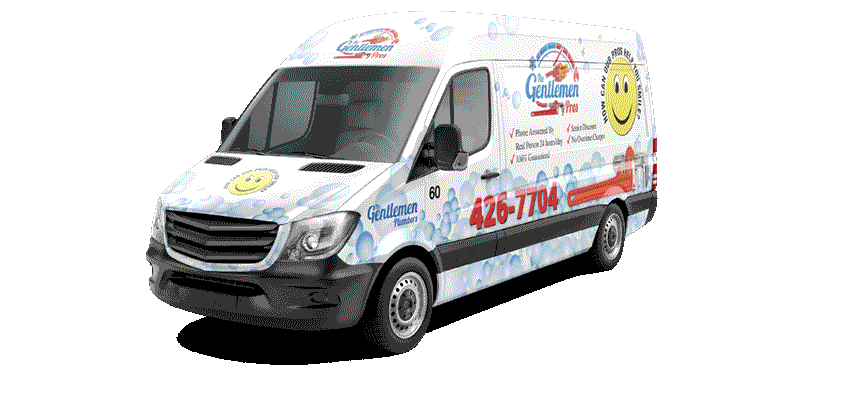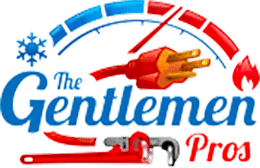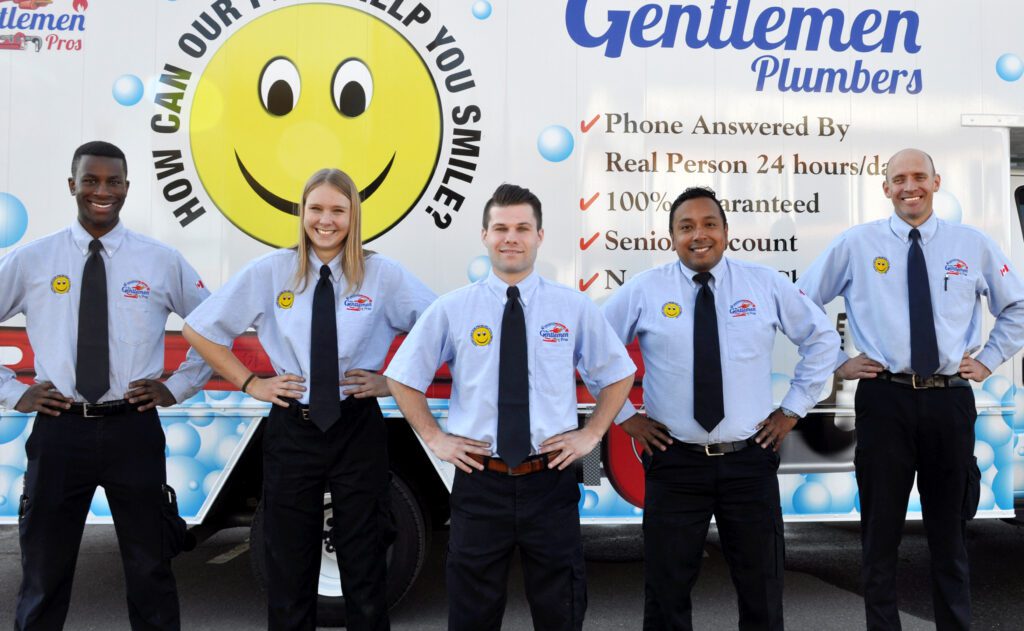We're In Your Neighborhood!

Same Day Service
Since 2001
Call The Gentleman Pros Now!
(780) 809-3219
We're In Your Neighborhood!


Same Day Service
Since 2001
Call The Gentleman Pros Now!
(780) 809-3219

A sewer liner is a process in which a sleeve lines an existing sewer line, is saturated with epoxy, and is cured in place, lining the pipe interior. This process does not require digging or excavating the existing sewer pipe.
“We had Jacob S come to our place from the Gentlemen Pros and it was a fantastic experience. He was friendly, respectful, kind, and knowledgeable. We were in a pinch with a cracked pipe and he made the process feel easy and stress free. I would definitely recommend using the Gentlemen Pros for all your plumbing needs! Also, this review is for the Edmonton crew!” Brittany O
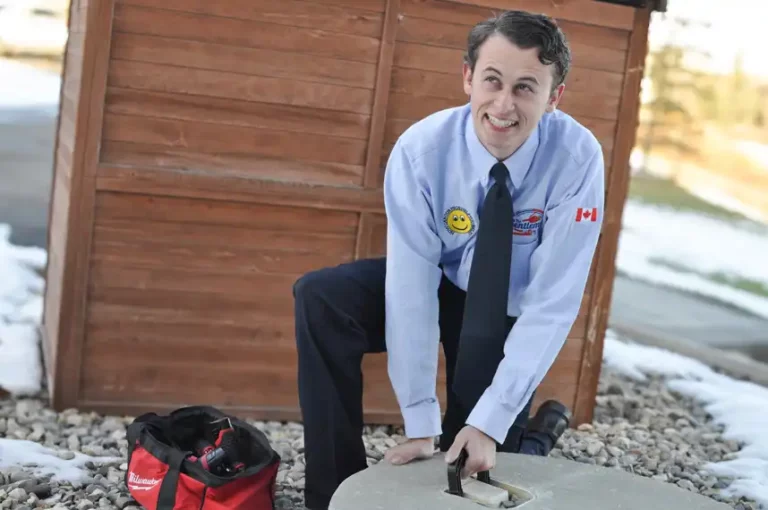

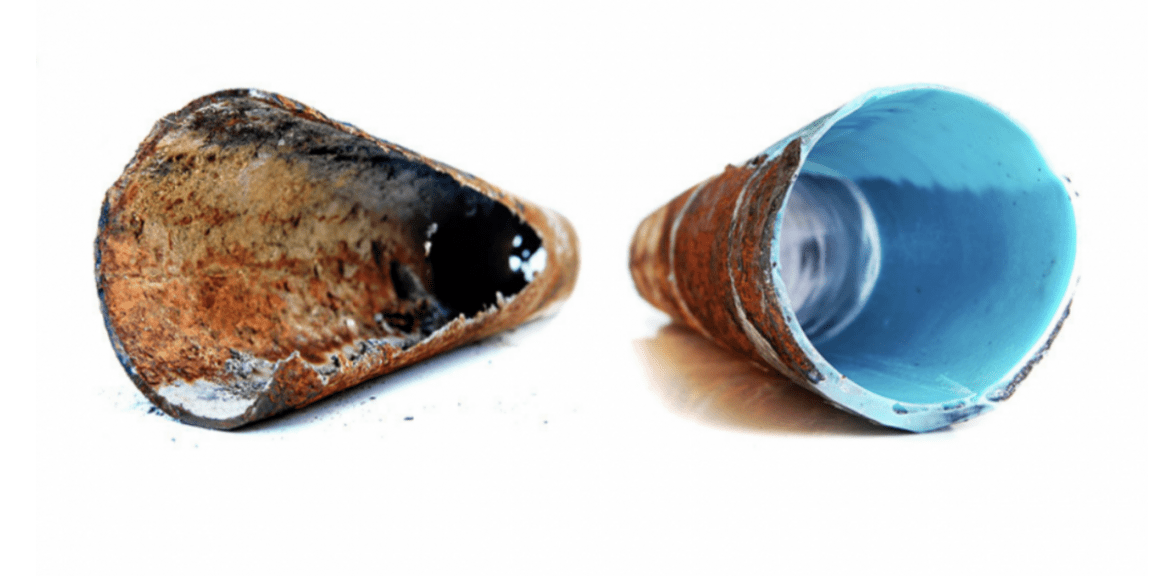
Don’t confuse a sewer line with a drain pipe inside your home.
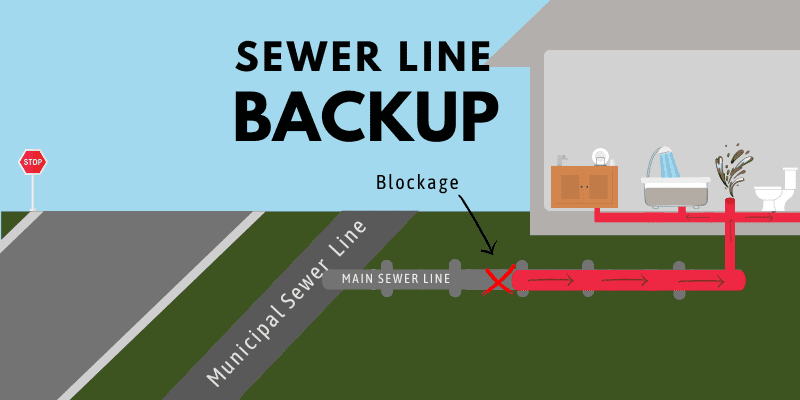
Your sewer line often called the main drain or the main sewer line is the larger sewer line that connects with the city’s sewer lines. In Edmonton, most sewer lines are laid deep beneath the ground.
All of the drains in your home lead to the main sewer line. The main sewer line is responsible for connecting the waste from your home to the city’s sewer lines, a really important job! If there is a problem with the main sewer line, then the consequence will be a sewer backup.
A sewer backup is exactly what it sounds like. If the main sewer line is clogged then sewage water and water will return back to your home and enter through a drain at the lowest level of your home. In Edmonton, this means a basement filled with sewer water. Yuck!
Older sewer lines or damaged sewer lines are more likely to back up. Consequently, a sewer liner is often the right solution for aging sewer or damaged sewer lines.
A sewer liner uses a technology that requires no digging. Here is a step-by-step of how the sewer liner works.

First, a sewer line camera inspection is done to ensure that the pipe is in good enough shape to be repaired with a sewer liner.
Next, the sewer line is cleaned to prepare for the lining process. (In most cases this means either augering or using a hydro-vac.)
Then the pipes are measured and an entry site is chosen.
After determining where the entry site is, it might require a small excavation to create a point of entry where the pipeline can begin.
Finally, the sleeve is inserted into the pipe with the new sleeve covering the affected area. The sleeve is saturated with epoxy and adheres to the sides of the pipe as the sleeve moves through the pipe.
Lastly, the epoxy is cured and solidified inside the pipe wall.
Once the pipe liner is cured wastewater can return and the regular flow leading out of the home can be established.
There are many reasons that a sewer liner might be the right solution. Most often a sewer liner is needed when existing sewer pipes wear out, are leaking, or have a crack. Pipes that are rusting from the inside out, also require replacement. If they are not too far gone, a pipe liner could be a good option.

Sewer lines most often back up because have roots entered the sewer line. Cracks in the pipe joints and rusted or damaged pipes are often invaded with roots.

Tree and plant roots grow best in a dark environment rich with water, and fertilizer. A sewer line provides the ideal place for roots to thrive, fed by a steady stream of wastewater.
Tree roots create a net to catch solid waste and create a blockage in your sewer line, eventually causing a sewer line backup.
In Edmonton where sewer pipes are buried deep beneath the ground, most often there is no warning that roots have entered the sewer line until there is a blockage. Consequently, damages to your sewer line would not be detected until you have a sewer line backup.
We recommend having an annual sewer line camera inspection to ensure your sewer lines are clear and free of cracks and damages that will lead to backups and further damage.
Schedule a sewer line camera inspection every year! We provide a complimentary inspection for our members. Learn more.
The short answer is yes.
Unfortunately, most homeowners discover there is a problem with their sewer line after a major sewer line backup.
When a damaged sewer line is clogged, a short-term or long-term solution can be chosen. In the short term clearing the sewer lines with an auger or hydro jet can restore flow back to the sewer line. This is a bandaid fix! It doesn’t address the cause of the problem.
A long-term solution is to repair the pipe itself. This ensures flow is restored back to the sewer line in the long term. A pipe liner renews the interior of the pipe, preventing root intrusions and sealing cracks.
The pipe liner is one continuous line, with no joints. This strengthens the integrity of the pipe. (Broken joint seals are often the first thing to age out in an older sewer line.)
A pipe liner is often ideal because it doesn’t require excavation.

In Edmonton, this can be very inconvenient because of the depth at which the sewer pipe is buried. After an excavation landscaping is required. In some situations, demolition, and rebuilding of a deck, fence, or driveway could add more cost.
A sewer liner is not ideal when there is a major belly in the pipe or the pipe is too misshapen.
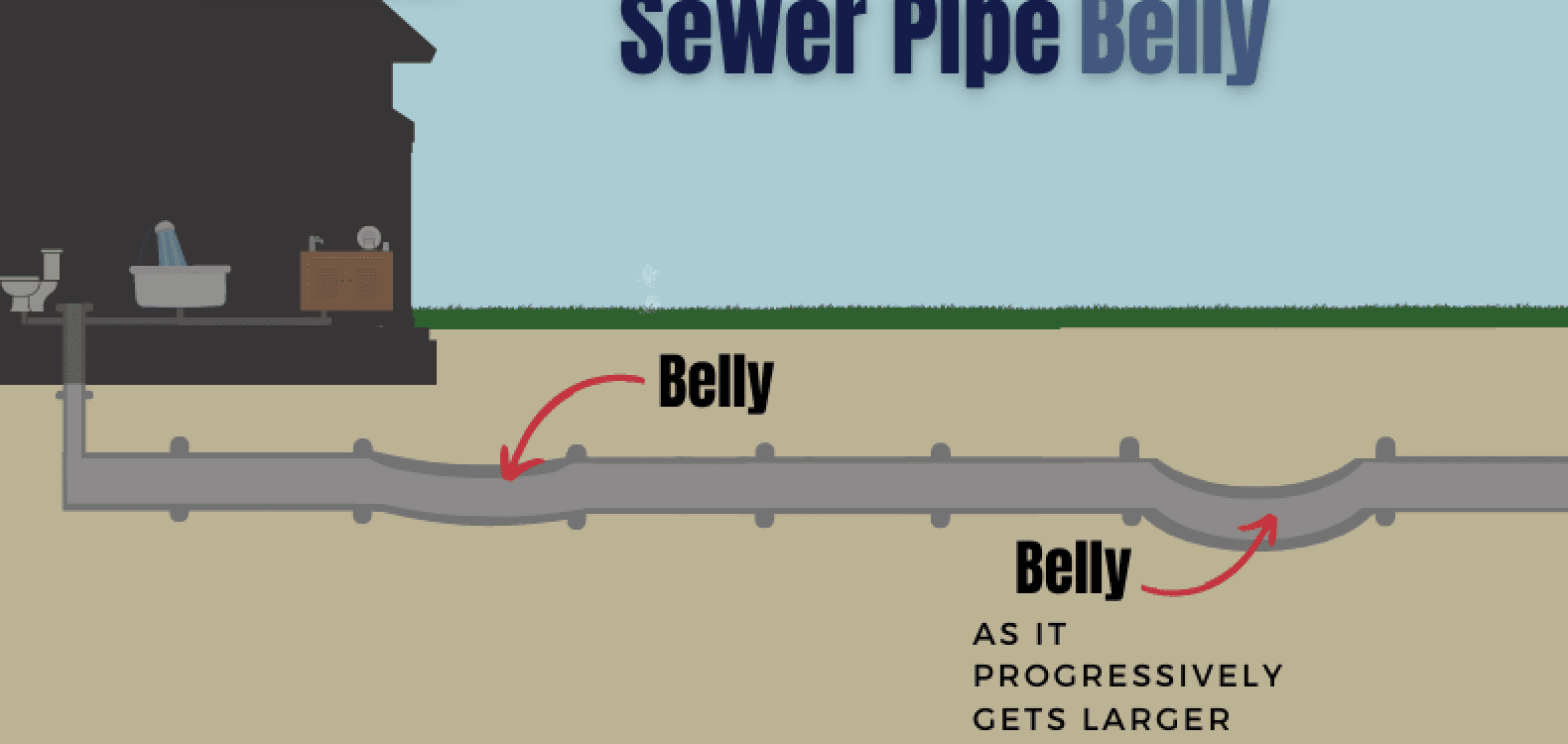
A sewer liner can not be installed if the pipe is too damaged and not holding its shape. Having a sewer inspection regularly can inform you of the health of the sewer line before it is too far gone and excavation and replacement are your only options.
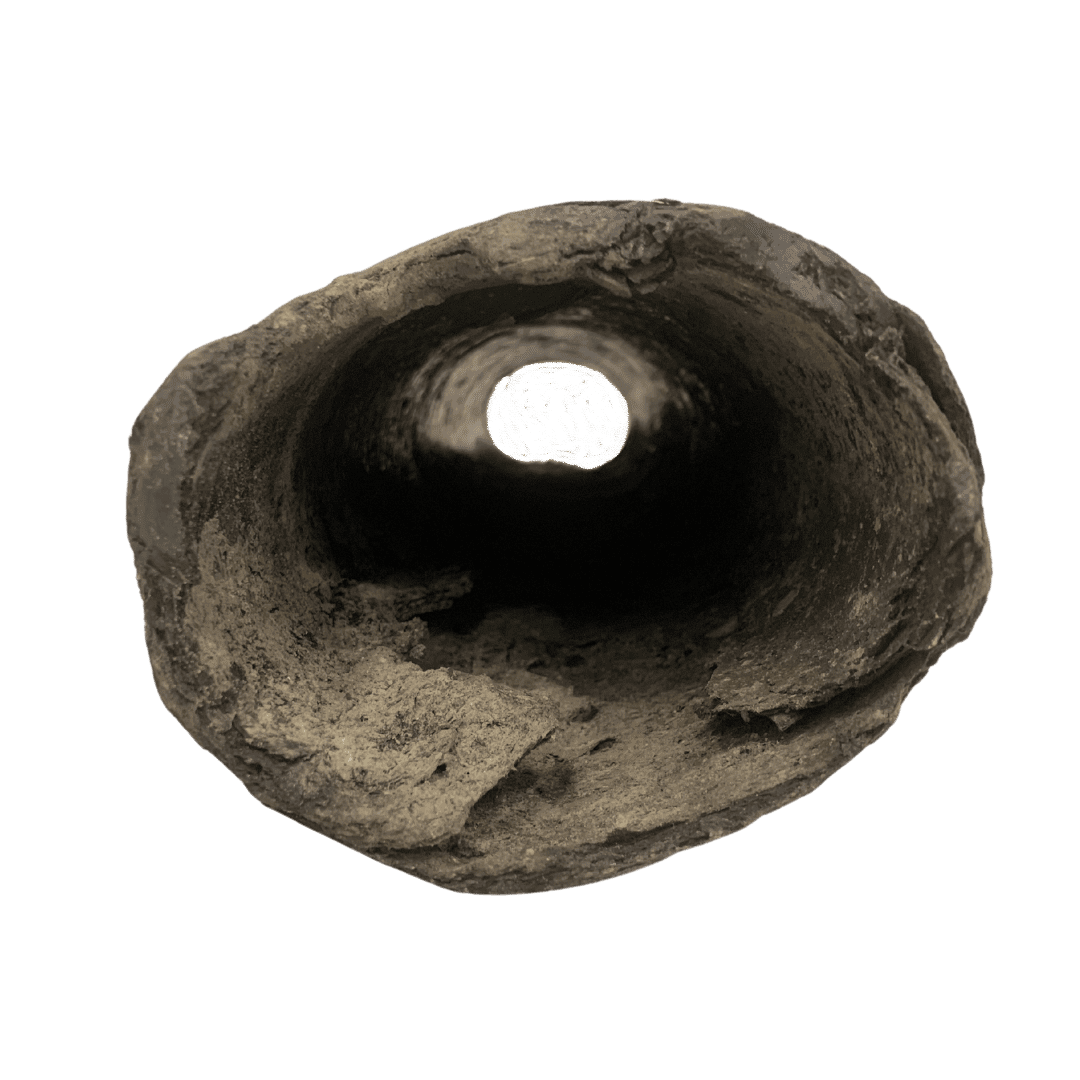
Above is a no corrode pipe that is no longer holding its shape.
In Edmonton, pipe liner installation is not ideal all year round. Pipe liners can not be installed in temperatures below -5 degrees C, because the epoxy becomes too hard to work with.
Excavation can be done, all year round, but at a greater cost when the ground is frozen.
An annual sewer line camera inspection ensures you know the status of your sewer line, and prevents you from finding yourself in an emergency situation that you did not budget for.
We provide a complimentary inspection for our members. Learn more.
A homeowner can expect another 30 to 50 or more years after the sewer line is installed, assuming there are no other issues with the sewer line.

Sewer pipes made from plastic PVC or ABS pipes have the longest life span. They do not rust from the inside like cast iron, crack like clay pipes or decompose like Orangeburg pipe.
Adding a liner inside of an older pipe creates a long-lasting smooth pipe inside of the existing pipe similar to plastic pipes.
The smooth interior of the sewer pipe allows waste to flow freely, less likely to catch or clog.
Many homes built before 1970 did not use plastic sewer pipes. We highly recommend scheduling a sewer line inspection if you have an older home.
In preparation for a pipe liner installation, a technician will come to your come and inspect the sewer line using a camera to ensure the pipe is a good candidate for a pipe liner. (If not, the technician will provide other options to consider.)
The technician will measure the length of the pipe and give you a cost ahead of the work, and schedule the pipe liner installation.
On the day of installation, 2 to 3 technicians are required. They will clean the sewer line in preparation for the new pipe liner. Next, they will choose a point of entry for the installation, which may require a small excavation. The sewer line will be closed, meaning you cannot run water, flush toilets, etc. for the duration of the service.
The service will last a few hours up to an entire day. By the end of the day, flow is restored back to normal, and your sewer line will be in good working order!
Please contact us to schedule a sewer line camera inspection, and find out if your sewer lines are healthy.
